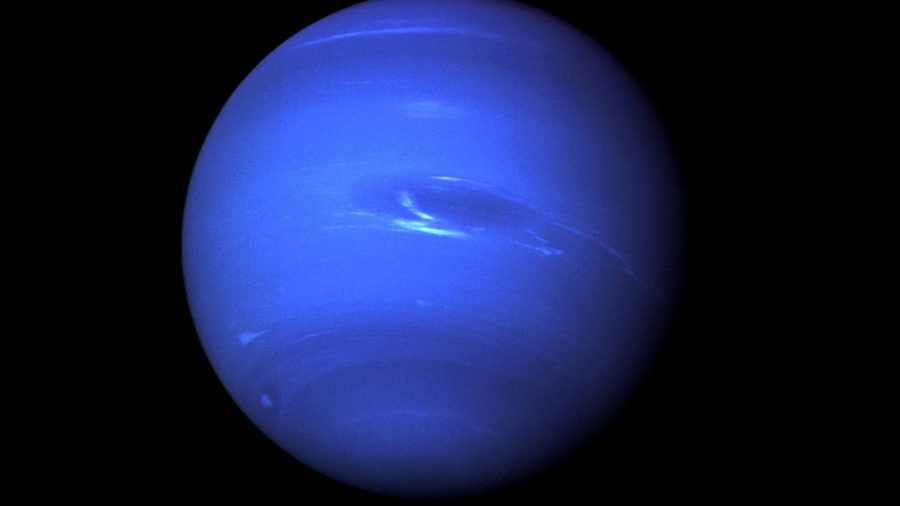A tiny moon was recently discovered around Neptune, said a study published Feb. 20 in the journal Nature.
Hippocamp, the smallest moon of Neptune, is named for a sea monster in Greek mythology. The hippocamp, sometimes known as the hippocampus, is said to have a horse body and a fish tail, depicted in Greek and Roman artwork.
The journal said that the moon is only 21 miles in diameter, USA Today reported. In comparison, Neptune is about 30,599 miles in diameter, and Earth’s moon is 2,159 miles in diameter, while the Earth is 7,917.5 miles in diameter.
A new moon has been found near Neptune, joining the other 13 we knew about. It’s so small that it wasn’t detected during the 1989 Voyager 2 flyby. https://t.co/5bL1YQCWEb
— USA TODAY Tech (@usatodaytech) February 20, 2019
Hippocamp is the seventh inner moon of Neptune, the eighth planet from the Sun. It wasn’t seen during Voyager 2’s flyby back in 1989.
“During its 1989 flyby, the Voyager 2 spacecraft imaged six small moons of Neptune, all with orbits well interior to that of the large, retrograde moon Triton,” said Nature.
But now, the Hubble Space Telescope observed the moon in recent days.
“We also observe Naiad, Neptune’s innermost moon, which was last seen in 1989, and provide astrometry, orbit determinations and size estimates for all the inner moons, using an analysis technique that involves distorting consecutive images to compensate for each moon’s orbital motion and that is potentially applicable to searches for other moons and exoplanets,” said the report.
All of the inner moons are believed to be younger than Neptune itself. The planet has 14 total moons.
According to CNN Wire, Hippocamp orbits about 7,500 miles from the moon Proteus.
“Our results suggest that Hippocamp is probably an ancient fragment of Proteus, providing further support for the hypothesis that the inner Neptune system has been shaped by numerous impacts,” said Nature of the finding.
“The first thing we realized was that you wouldn’t expect to find such a tiny moon right next to Neptune’s biggest inner moon,” said study lead author Mark Showalter, reported USA Today. “In the distant past, given the slow migration outward of the larger moon, Proteus was once where Hippocamp is now.”
Showalter, a SETI (search for extraterrestrial intelligence) astronomer, discovered Hippocamp via Hubble’s cameras.
Neptune
Neptune, named after the Roman god of the sea, is the third most massive planet by after Jupiter and Saturn. The planet, which has a deep blue hue, is about 17 times larger than the Earth.
Meanwhile, it orbits the Sun every 164.8 years.
It was first observed via telescope by Johann Galle in 1846.
Similar to Saturn and Jupiter, Neptune is comprised mainly of hydrogen and helium along with some hydrocarbons and nitrogen. But like Uranus, the planet’s interior is composed of rock and ice.
Uranus and Neptune are both considered “ice giants” while Saturn and Jupiter are called “gas giants.”
From The Epoch Times


